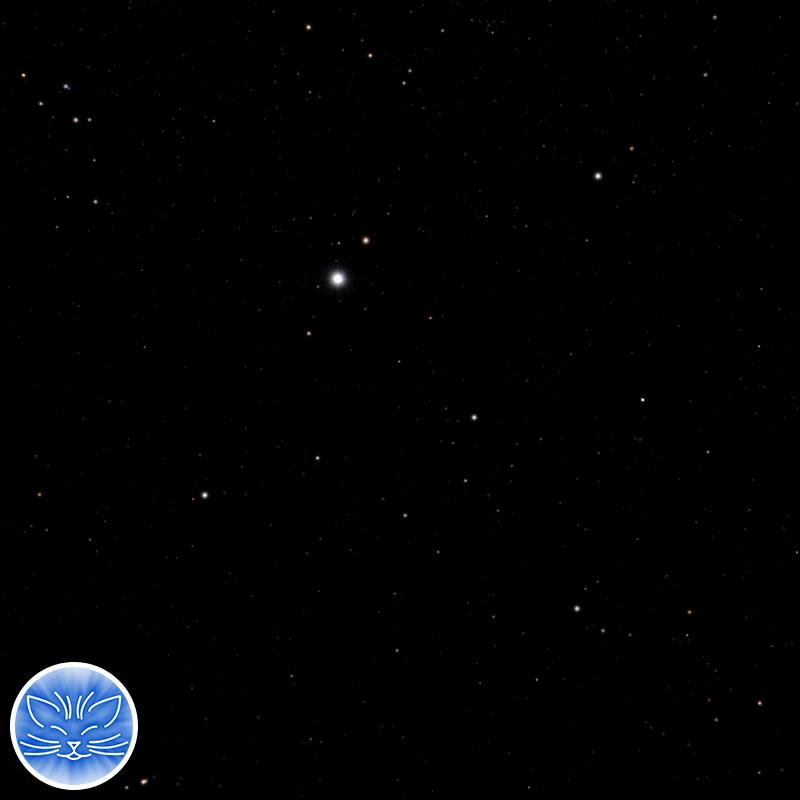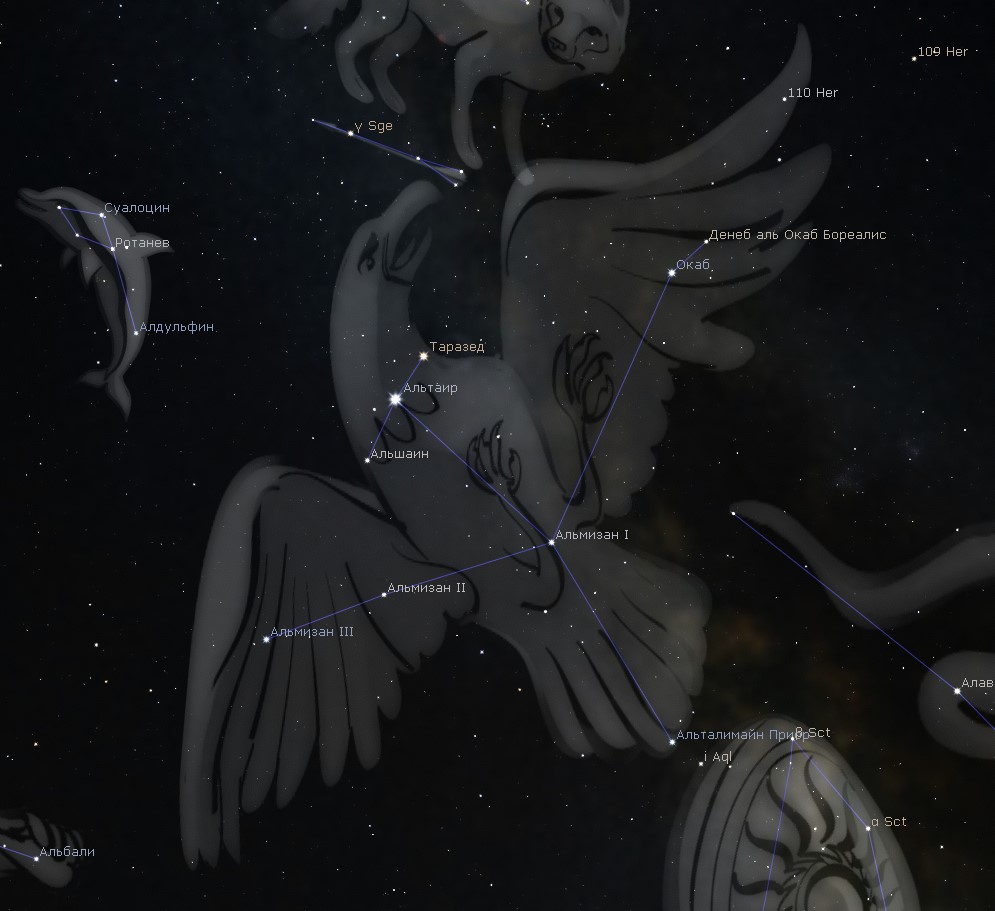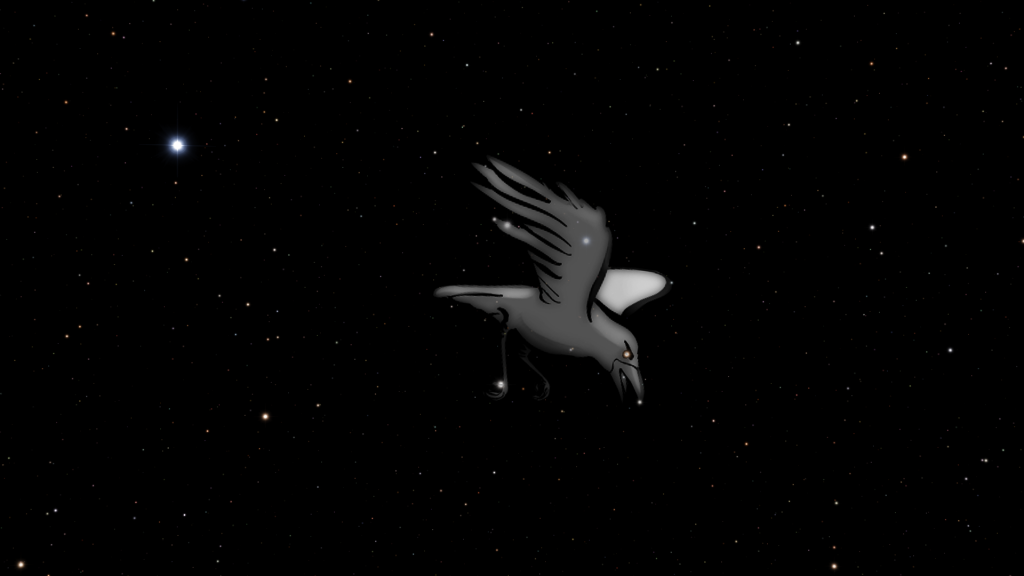The Aquila constellation is equatorial. It can be observed in the northern hemisphere, and the best period for observation is summer and early autumn. Moreover, in order to see Aquila, it is not necessary to wait for the onset of deep night. Its brightest star Altair begins to appear already in the twilight sky. But only in the dead of night you can see the Milky Way, which passes through the Aquila constellation.
How can you see the Aquila constellation in the sky? In large cities, because of the glare and dust, it is not so well visible, so animations and an image are prepared for you outside the city, in the mountains and if you look at it in space, from orbit.



A characteristic feature is the configuration of the three main stars of the constellation, located in a row at a short distance from each other. These are the stars γ (Tarazed), α (Altair) and β (Alshain) – the neck, back and left shoulder of the Eagle.
Altair is a bird’s neck, a star of the first magnitude, a white hot star, with a mass 1.8 times greater than the Sun, and a luminosity of 11 times. This is the 12th brightest star in the sky, only 16.8 light-years away from us. Thus, Altair is one of the stars closest to us, visible to the naked eye. Moreover, the distance between the Sun and Altair continues to shrink, and in 138 thousand years it will pass at a minimum distance of 8.6 light-years from the Sun and will look like a very bright star of -0.62 magnitude (this is comparable to the brightness of the star Canopus, which, unfortunately, is not visible in the middle latitudes of the northern hemisphere). How this will happen can be seen in this beautiful animation. Also Altair is one of the vertices of the Great Summer Triangle: Vega (α Lyrae) – Deneb (α Cygni) – Altair (α Aquilae). Watch an interesting video about what will happen to the Big Summer Triangle in 110 thousand years.
Tarazed is the shoulder of a bird, a double star, a bright orange giant located at a distance of 460 light-years from the Sun. It is 100 times larger in diameter and 2538 times brighter. Tarazed has a companion, but you can only see it through a telescope or binoculars. Alshain is the back of a bird, a triple star, a red subgiant on the way to becoming a red giant. Its mass is 1.3 times the mass of the Sun, and its distance is about 44.7 light-years. Both companions of this star are also visible only through a telescope or binoculars.

In addition to these brightest stars, other interesting objects can be observed in the Aquila constellation – cepheids (pulsating variable stars that have a clear relationship between the period of brightness fluctuations and luminosity, so that it is possible to determine the distances to the galaxies in which these cepheids are located), a unique eclipsing binary system, as well as a double pulsar.
Mythology of the Aquila constellation
Aquila constellation derives its name from the Latinized Greek word for eagle, a three-letter abbreviation Aql. It is the 22nd largest of all 88 constellations, and it is one of the oldest. At the time of Ptolemy, it was included in the catalog of the starry sky (there were 48 constellations in total). However, currently the number of stars that make up the Aquila has expanded.
According to Greek legend, Aquila is the bird of prey that for many years pecked at the liver of Prometheus, the great titan, whom the angry gods chained to a rock for stealing from Hephaestus and bringing fire to people from Olympus. For his disobedience, he was severely punished and the punishment lasted until Hercules killed an eagle with an arrow and freed the hero.
However, there is another, albeit less common legend about this constellation. According to it, a young man Ganymede lived in ancient Greece. He was born from the marriage of the Trojan king Tros and the nymph Kalliroi, the daughter of God Scamander. Ganymede was distinguished by extraordinary beauty and was “the most beautiful of mortals.” This attracted the attention of Zeus and he fell in love with the young man. When Ganymede was tending his father’s herd or was hunting on the slope of Mount Ida, he was abducted by an eagle. According to various versions, the bird was either sent by Zeus, or he himself turned into it. Ganymede, carried away by the eagle to Olympus, was granted eternal youth and immortality. And he himself served and poured nectar to the gods. This bird was immortalized in the starry sky.
Have you seen this constellation with the naked eye or with a telescope? What is your favorite constellation? Are you interested in the category about constellations? Share your impressions in the comments.





